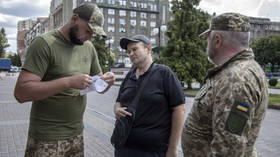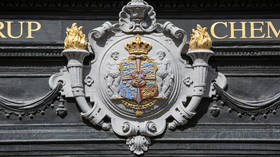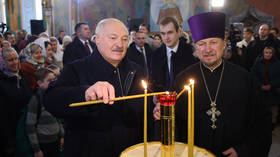Chernobyl dead zone to close to tourists
Chernobyl – the scene of the world’s worst nuclear disaster – has been attracting a growing stream of adventurers hungry for a glimpse of its post-apocalyptic landscape. Now, though, the globe’s most surreal tourist site looks set to close its doors.
The Chernobyl museum in Kiev has become one of Ukraine’s top tourist attractions. Interest peaked in April of this year, when the world marked the 25th anniversary of the disaster. But for those craving a first-hand experience of Armageddon, there is a more adventurous alternative. The contaminated zone around Chernobyl itself is the real deal for those seeking an unusual experience. Over the past decade, tourists have been flocking here – more than 10,000 of them each year. Forbes magazine even named this dead zone one of the world’s most exotic tourist destinations. RT’s Aleksey Yaroshevsky has made regular reporting trips to the zone and spoke to Alexander Sirota, a former resident of the ghost town of Pripyat, who has been organizing these tours for several years. He told RT visitors are always fascinated by what they see, although their motivations for making the trip vary. “People have different reasons [to come here] – some want to see what an apocalypse could look like. Some want to feel the history. For some – this is their childhood, like the Soviet atmosphere being preserved. But for me it’s more important not why they come here, but what effect it has on them”, says Alexander. But since June, this radioactive tourism has been suspended. The prosecutor general’s office conducted checks and ruled that the Emergencies Ministry had broken the law with these trips as well as making an unhealthy profit. Every tourist to the zone has been paying around a US $100 for the trip meaning a million-dollar turnover for the organizers every year."We urge the ministry to inform the government of every dollar earned by these trips. We know that a lot of money has been made – but we have no idea in whose pockets it ended up. Why not put the money into the budget and use it to solve the zone’s problems?” asks Alexander Ampleev, a spokesman for Ukraine’s Prosecutor General’s Office.The ministry is defiant and says it has stuck by the law. It claims these trips are a vital way of educating the world on how to avoid such disasters – and says they could help fund new industrial projects on the contaminated land. The Chernobyl zone will never again be inhabited, but experts say it could still serve other purposes.“Almost half of the 30-kilometer area has acceptable levels of radiation – both because of the fallout of nuclear particles and de-contamination procedures. That’s why we can use these large unoccupied spaces to build solar and wind power stations. We can even grow bio-fuel there,” suggests Dmitriy Bobro from Ukraine’s Emergencies Ministry. The Emergencies Ministry has now filed a lawsuit in a bid to resume tours to the contaminated zone and the court is expected to start hearings in mid-September. Ukraine’s 30-kilometer nuclear wasteland will remain closed to the public until then – but the debate remains very much open.













